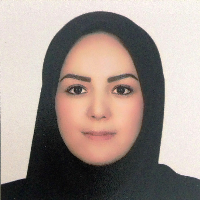Relationship between Electromyography Activity of the Knee Joint Muscles and Ground Reaction Forces during Single-Leg Drop Landing
Author(s):
Article Type:
Research/Original Article (دارای رتبه معتبر)
Abstract:
Background and Aims
Activity of knee joint muscles can influence the magnitude of ground reaction forces during jump-landing tasks. The objective of the present study was to examine the relationship between electromyography activity of the knee joint muscles and ground reaction forces during single-leg drop landing task. Materials and Methods
A total of 20 healthy male athletes (mean ± standard deviation, age 25.4±4.45 years) participated in the present correlational study. Activity of knee joint muscles, including quadriceps, hamstrings, and gastrocnemius, at pre and post landing phases were analyzed and their relationships with ground reaction forces (vertical, anterior-posterior, and medial-lateral) were assessed during single leg vertical drop landing task. Pearson correlation coefficient was used for data analysis. Results
The results demonstrated significant negative correlation between lateral gastrocnemius muscle activity and all components of ground reaction forces (P= 0.001). Also, there was a significant positive correlation between medial gastrocnemius activity and all components of ground reaction forces at pre landing phase and also a significant negative correlation with vertical and anterior-posterior component at post landing phase (P=0.001). Moreover, there was a significant negative correlation between lateral hamstring activity and anterior-posterior ground reaction force at post-contact phase (P=0.001).Conclusion
It seems that gastrocnemius (medial and lateral) and lateral hamstring muscles play important roles in adjusting ground reaction force components during single leg vertical drop landing task. According to the results of the current study, it is suggested that rehabilitation specialists focus especially on activation exercises for gastrocnemius (medial and lateral) and lateral hamstring muscles in order to prevent anterior cruciate ligament injury.Keywords:
Language:
Persian
Published:
Scientific Journal of Rehabilitation Medicine, Volume:8 Issue: 3, 2019
Pages:
90 to 99
https://magiran.com/p2032586
سامانه نویسندگان
مقالات دیگری از این نویسنده (گان)
-
Effectiveness of Dynamic and Static Plank Exercise on Inter-Recti Distance in Postpartum Women
Mahsa Khademi, Raheleh Ghaffari, *
Women’s Health Bulletin, Oct 2024 -
A Comparative Study of Physical Fitness Characteristics Between Male and Female Goalball Players
*, Somayeh Mozafari
Journal of Humanistic Approach to Sport and Exercise Studies, Spring 2024 -
Knowledge and attitude of Mazandaran's soccer coaches toward sport injury prevention
*
Safety Promotion and Injury Prevention, -
The Effect of Game-based Intervention on Postural Control and Motor Per-formance in Children with Intellectual Impairment
Ebrahim Ebrahimi, *, Negin Sadat Tabatabaei, Somayeh Mozafari
Journal of Humanistic Approach to Sport and Exercise Studies, Winter 2024




